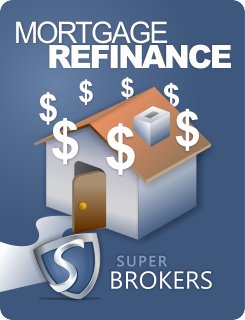Mortgage Refinance
There is no doubt that many of us have heard the term before: mortgage refinance. But what does it really mean? And what can it do to benefit you as opposed to the rates you’re currently experiencing in your current mortgage?

Mortgage refinance is the process of getting a new mortgage to replace the original one. Refinancing is done to allow the borrower to get a better interest rate and term than their original mortgage may have entitled.
The mortgage refinance is meant to replace the original one either due to a reduced interest rate, to cut monthly payments, or perhaps to tap into a home’s equity. There are some that choose to refinance to pay off the loan at a faster rate, or to switch from one type of rate to another.
Refinance Your MortgageWhy Refinance?
As stated briefly above, there are a few reasons that one would want to participate in a mortgage refinance. Those are:
Reducing your monthly payment
If you have the goal of paying less each month, you can refinance your loan with a lower interest rate. You could also extend the length of the loan from 15 to 30 years. The only drawback with that is that you will pay more interest in the long run.
Pay off the loan faster
This would be in the case of moving from a 30-year mortgage to a 15-year mortgage. You pay more each month but ultimately get the balance of the loan paid off much quicker as well.
Switch rate types
There are some that begin their mortgage with a variable rate; this means that the homebuyer could potentially enjoy lower rates but would also pay higher rates should they rise. A fixed-rate is just that and the homebuyer gets to enjoy the stability of rates that don’t change.
Tap into equity
When refinancing to borrow more than is owed on the current loan, the lender will give out a check for the difference known as a cash-out refinance. People can actually get that cash-out refinance and a lower interest rate all at the same time.
The Methods for Obtaining a Mortgage Refinance
There are a few ways that you can obtain a mortgage refinance. Those methods are:
Breaking your existing contract early
This involves breaking your existing contract. Each mortgage can contain specific terms to that mortgage, so know the terms of breaking the contract before just going ahead and doing it.
Add a home equity line of credit
A home equity line of credit gives you access to the equity that you have built in your home at your own discretion. It is important to note that you are responsible for interest only payments each month on whatever the outstanding balance is.
Contact your existing lender to find out about accessing that current line of home equity; you can also contact a small subset of other lenders for this as well depending on who your current lender may be at the time.
Blend and extend your current mortgage
Depending on who your existing lender is, they may offer you what is known as a ‘blended rate’: this is essentially a ‘blend’ of your current mortgage rate plus any money that you borrow at current interest rates.
Blended rates tend to be higher in most cases than competitive mortgage rates on the market. Because of this, make sure you compare the blended rate against the savings if you were to break your current mortgage.
What does a mortgage refinance cost?
The cost of the refinance really depends on the strategy that you use to access your current equity or to lower your current interest rate. Regardless of the strategy that you use, there will be legal costs involved as a lawyer has to change the financing on the title. The good news here is that if you have a mortgage balance greater than $200,000, most brokers or lenders will cover that cost.
If you are trying to break your mortgage in the middle of the term in order to lower your rate or access equity that you have built up, the lender will charge you a prepayment penalty. For fixed mortgage rates, this penalty is the greater of the interest rate differential payment (IRD) or three months of interest. If you have a variable rate, the penalty here is simply three months interest.
The decision to get a mortgage refinance depends on your current rate and term. There is not always a way to trim down your current monthly payment and cut down on your term. You can either try to get better rates or pay off the principle of the loan.
How do I get a mortgage refinance?
Borrowers should ensure that refinancing makes financial sense in the long run. They can do this by using our Mortgage Refinancing and Equity Calculator. This tool will allow homeowners to estimate a prepayment charge, find out how refinancing will affect interest and determine if debt consolidation will help their finances.
Next, borrowers should contact Super Brokers to speak with a mortgage professional who can help them decide if a mortgage refinance suits their needs. Keep in mind for mortgage refinance, there must be a minimum of 20 percent equity in the property and a maximum amortization of 25 years. The property must also be located on Canadian soil.